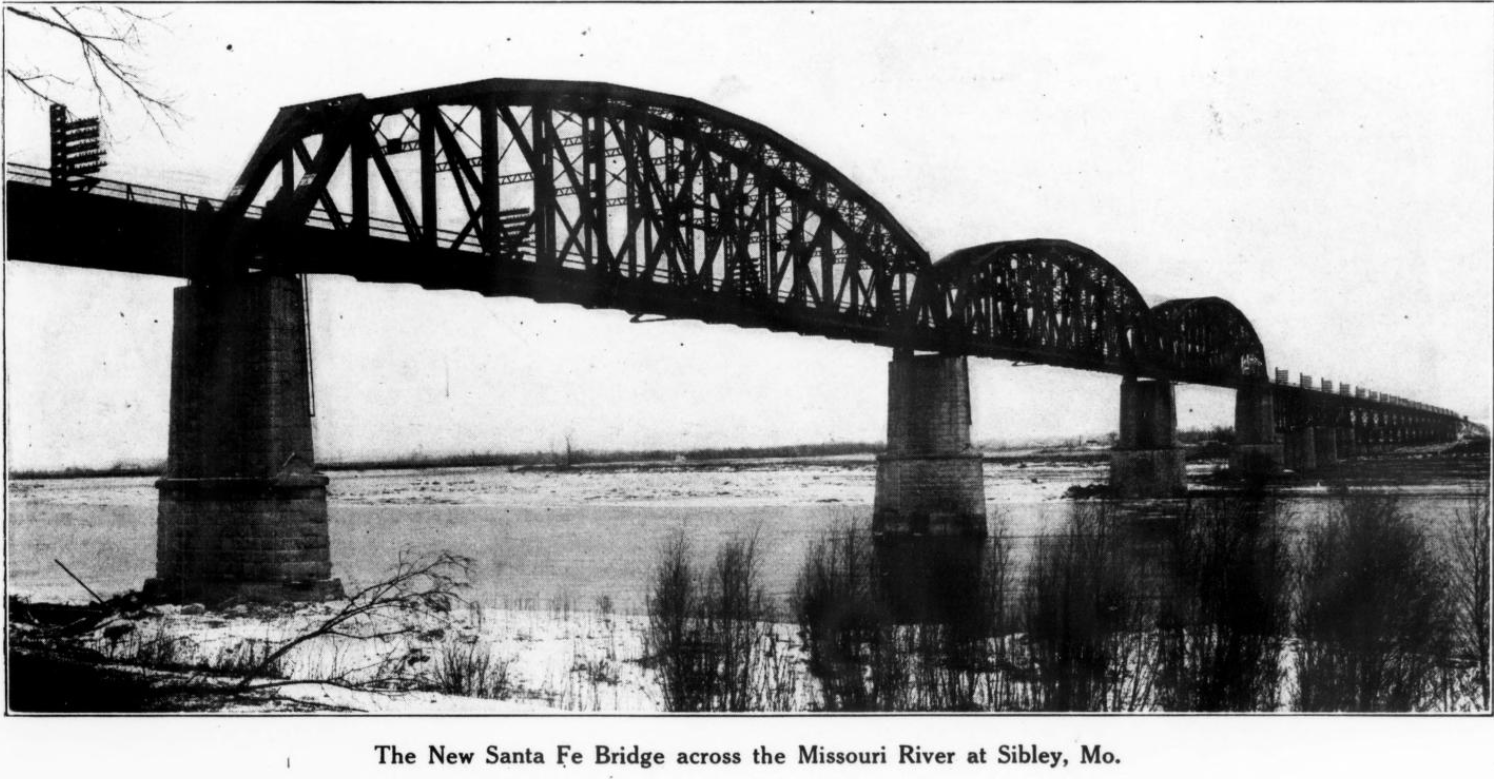View an article regarding the construction of this bridge.
One of the longest railroad bridges in Missouri crosses the Missouri River in a very isolated portion of Jackson and Ray Counties.
Despite being visible for miles; the bridge is actually rather hard to access. The south end (railroad west) lies very close to a massive coal fired power plant. The result of this is several cameras guarding the bridge.
In addition, the north end is very isolated, although can be accessed via County Road 372; which dead ends near the bridge. The author is unsure if this road is a private road. However, the author had permission to access the bridge from this end.
Other than the St. Charles Rail Bridge on the other side of Missouri, this bridge is the largest current railroad bridge over the Missouri River.
The main spans consist of a trio of 396 foot long Pennsylvania Through Trusses, each with 16 panels and pinned connections. To the south, these are approached by 3 more deck plate girder spans.
On the north end, a large 247 foot long "fishbelly" 10-panel pin connected Pratt Deck Truss approaches the main spans. In addition, a pair of standard 172 foot 7-panel pin connected Pratt Deck Trusses approach this.
The north approach consists of an extremely long viaduct, with fourteen 90 foot long spans, resting on steel towers with 45 foot spans. The very north end contains a pair of 60 foot deck girder spans.
The substructures consist of a combination of stone, concrete and steel. The piers that the trusses rest on are constructed of stone; original to the 1888 bridge. Steel towers support the north approach, and concrete piers support the south approach, north abutment and tower bases.
Other than the massive main trusses of the bridge, it is notable for being 4/5 of a mile long; and over 90 feet high. It was one of the largest bridges on the Santa Fe system.
Because the Marceline Subdivision is double tracked, this bridge uses gauntlet technology. During the authors 45 minutes exploring the bridge, 4 trains came by. The gauntlet technology removes any use of switches, and can combine two tracks into a little more than the space of one.

Blueprints of the bridge, from The Railway Age-Gazette; Volume 59
The previous bridge was very similar, with the main spans being Whipple Through Trusses. As early as 1905, the railroad intended on double tracking this line. One proposal involved building a new alignment, and constructing a lower double track swing bridge.
This proposal was deemed too expensive, and would have likely resulted in a severe curve and grade issue. The other option was to construct the current gauntlet bridge.
Because this line is the BNSF mainline between the Pacific Ocean and Chicago; it sees some of the heaviest traffic on the BNSF system.
As a result, a recent proposal has been made to build a parallel bridge; or reconstruct this bridge entirely. The author hopes that the option chosen is similar to the situation with the Plattsmouth Crossing, located south of Omaha.

Photo of the recently completed bridge, from The Railway Age-Gazette; Volume 59
Overall, the bridge appears to be in very good condition. Recent rehabilitations have occurred, including the rehabilitation of the deck and some steel components.
As one of the most critical pieces of infrastructure on the BNSF system, a strong and healthy bridge is very important.
The author has ranked this bridge as being regionally significant, due to the immense size of the structure. Unfortunately, the author stopped short of a higher rating due to the newer age of the bridge.
The photo above is an overview from the north bank. The photo below is a photo of detail on one of the approach trusses.
| Upstream | Harry S. Truman Bridge |
| Downstream | Glasgow Rail Bridge |
